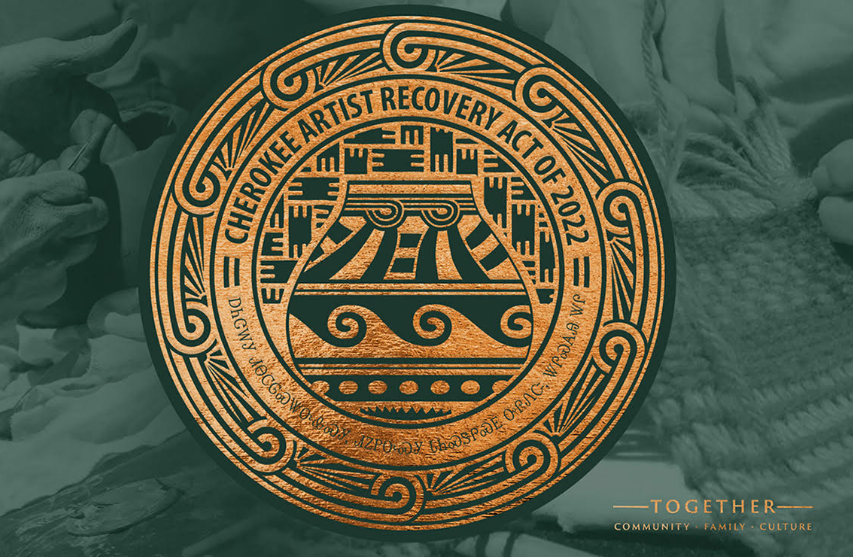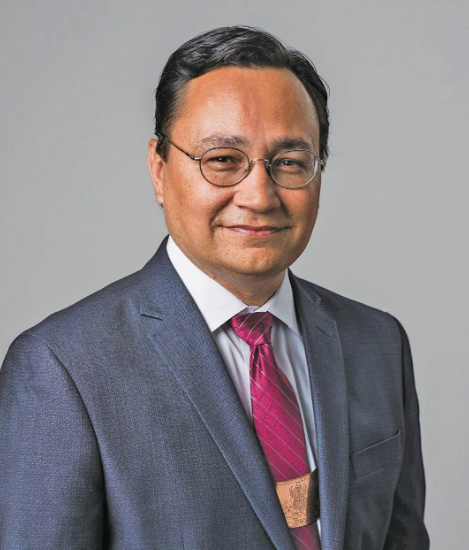
- Details
- By Chuck Hoskin Jr
Guest Opinion. In 1935, the United States was still in the grips of the Great Depression. Millions of people felt the impact of the economic crisis, including the nation’s artists.
In response, President Franklin D. Roosevelt included a number of relief programs for artists as part of his larger New Deal program. Like so much of the country during the Great Depression, artists suffered under harsh economic conditions. “Artists,” said one of President Roosevelt’s advisors, “have to eat, too.”
Most prominent and enduring of these programs was the Federal Art Project, part of the Works Progress Administration. During its operation from 1935 to 1943, the Federal Art Project put thousands of artists to work creating in a country in need of hope. The project produced over 150,000 pieces of art, from paintings, to sculptures, to murals to posters.
The New Deal era art programs revitalized the art community across the United States and gave rise to a new generation of talented American artists. Both established artists and young rising stars created works of art reflecting the nation’s hopes, concerns and aspirations in a way that endures to this day. New Deal funded art can be found throughout the country. These works of art still inspire.
Today, we are on the heels of an economic and public health crisis that, though a far cry from the Great Depression, has impacted Cherokees near and far and in all walks of life. Throughout the pandemic, Deputy Chief Bryan Warner, the Council of the Cherokee Nation and I have crafted a number of relief programs, with over $750,000,000 in direct cash assistance provided to Cherokee citizens.
This week, drawing some inspiration from the New Deal era Federal Art Project, Deputy Chief Warner and I proposed to the Council the Cherokee Artist Recovery Act (ARA). After three years that saw art galleries close, art classes postponed, art markets go virtual and the buying power of art patrons shrink, Cherokee artists deserve a boost.
If approved, the ARA will inject $3 million into the Cherokee art community over the next three years. We will spend a minimum of $1.5 million on purchasing art from Cherokee artists. Funds are also available under the legislation to make capital improvements to our existing art facilities. The proposed law provides funding for Cherokee art instruction, so that our great artists can earn money teaching and inspiring a new generation of Cherokee artists to follow in their footsteps.
The legislation goes even further. To help artists regain a foothold in the economy, the law commits funds for a range of assistance, including help with marketing and traveling to art markets. The law will also establish the Cherokee Artist Resource Database, a comprehensive listing of all known Cherokee artists. The database can serve as both a marketing resource and a means of preserving information about artists for posterity.
Under the ARA, we can support a wide range of art forms. The proposed law defines “art” broadly, covering any “Cherokee Nation citizen” engaged in “any of the various creative arts.” We need, to the greatest extent possible, to encourage artistic creativity from as many Cherokees as possible, without barriers.
I intend to entrust the administration of the Artist Recovery Act to our Cultural Tourism department. This is the group of talented men and women who design and operate our great museums, art shows and other existing art programs. If approved, this new $3 million initiative will add to the millions we already invest annually to support Cherokee artists, purchase their art and share their amazing creativity with the world.

My hope is that the proposed ARA achieves several important goals. First, I hope it helps Cherokee artists regain what they lost economically due to the ongoing consequences of the COVID-19 pandemic. Second, I hope the art instruction component of the law inspires Cherokee creativity, particularly in a new generation of young Cherokees seeking to make a positive artistic impact on the world – and make a living doing it.
Finally, my hope is that the ARA furthers the collective efforts of Cherokee artists to preserve and revitalize what it means to be Cherokee. From time immemorial, artistic expression by Cherokees reflects who we are as a distinct people, our connection to the spiritual world, our deepest concerns and our highest aspirations. To ensure that Cherokee culture remains strong and vibrant far into the future, we need to get behind our artists today. I believe the Artist Recovery Act will do just that.
Chuck Hoskin, Jr. is the principal chief of the Cherokee Nation.
More Stories Like This
The Absence of October's Job Report Shows Why Native American Communities Need Better DataTribal IDs Are Federally Recognized. ICE Agents Are Ignoring Them.
Thanksgiving: Part of "Broken Circle Holiday"
Thanksgiving is a Tradition. It's Also a Lie
Decisions About Us, Without Us: Education Dismantling Ignores Tribal Nations
Help us defend tribal sovereignty.
At Native News Online, our mission is rooted in telling the stories that strengthen sovereignty and uplift Indigenous voices — not just at year’s end, but every single day.
Because of your generosity last year, we were able to keep our reporters on the ground in tribal communities, at national gatherings and in the halls of Congress — covering the issues that matter most to Indian Country: sovereignty, culture, education, health and economic opportunity.
That support sustained us through a tough year in 2025. Now, as we look to the year ahead, we need your help right now to ensure warrior journalism remains strong — reporting that defends tribal sovereignty, amplifies Native truth, and holds power accountable.
 The stakes couldn't be higher. Your support keeps Native voices heard, Native stories told and Native sovereignty defended.
The stakes couldn't be higher. Your support keeps Native voices heard, Native stories told and Native sovereignty defended.
Stand with Warrior Journalism today.
Levi Rickert (Potawatomi), Editor & Publisher
